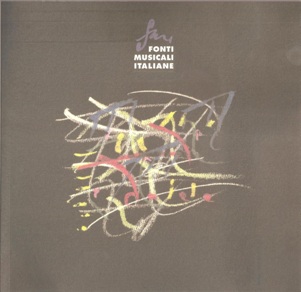Francesco Bianchini (1662-1729) e la sua dissertazione sugli strumenti musicali dell'antichità
Abstract
Il trattato di Francesco Bianchini, De tribus generibus instrumentorum musicae veterum organicae dissertatio (Roma, Amidei, 1742) è il risultato ultimo di un progetto che partì ben quarant'anni prima in circostanze inusitate. Appena eletto (1700), papa Clemente xi dispose il restauro della navata centrale di San Giovanni in Laterano e, fra le varie opere da realizzare, progettò la raffigurazione di dodici angeli musicanti. All'esperto Bianchini (nominato nel 1703 Presidente delle antichità di Roma) venne commissionata una ricerca per capire quali potessero essere i dodici strumenti musicali antichi più adatti ad essere raffigurati in mano agli angeli. Bianchini scrisse dunque una Dissertazione ed ammaestramenti sugli strumenti musicali da dipingersi in San Giovanni in Laterano: il manoscritto è conservato presso la Biblioteca Vallicelliana di Roma e costituisce il primo nucleo del futuro trattato. Per motivi ignoti, il progetto dei dodici angeli musicanti non andò a buon fine: al loro posto, sulle pareti della Basilica, verranno raffigurati più convenzionalmente dodici profeti.
Bianchini tuttavia non accantonò la Dissertazione, anzi: decise di farne un libro. Ne ampliò il contenuto, ne modificò la stesura, inserì delle tavole iconografiche accuratamente disegnate da lui stesso, tradusse il tutto in latino. Si possono ricostruire più versioni successive dell'opera, grazie ai manoscritti bianchiniani conservati alla Biblioteca Capitolare di Verona. Altro materiale significativo è a Bologna (Civico Museo Bibliografico Musicale), altro ancora si trova a Prato in un fondo privato.
Quando l'erudito morì (1721) il trattato non aveva ancora trovato la via della pubblicazione: la Dissertatio sugli antichi strumenti musicali andò quindi alle stampe solo nel 1742, a spese del libraio romano Fausto Amidei. Tuttavia il confronto fra il contenuto di tale volume e quello delle fonti manoscritte conservate a Verona e a Bologna mette chiaramente in luce l'azione di un anonimo revisore, il quale non si limitò a pochi interventi di redazione, ma aggiornò il testo, aumentò i riferimenti bibliografici e inserì paragrafi del tutto nuovi imprimendo all'opera un contributo determinante. È assai probabile identificare il responsabile di tali cambiamenti in Giuseppe Bianchini, nipote di Francesco e noto storico della Chiesa.
Francesco Bianchini (1662-1729) and his treatise on the musical instruments of antiquity
The treatise of Francesco Bianchini, De tribus generibus instrumentorum musicae veterum organicae dissertatio (Rome, Amidei, 1742) is the conclusive result of a project which originated at least forty years earlier in unusual circumstances. Pope Clemente xi, no sooner elected (1700), ordered the restoration of the central nave of San Giovanni in Laterano and, among the various works to be realized, planned the representation of twelve angels playing musical instruments. The expert Bianchini (who had been nominated «Presidente delle Antichità di Roma» in 1705) was commissioned to carry out a research into the identity of the twelve most appropriate antique musical instruments to be portrayed in the hands of the angels. Bianchini consequently wrote a Dissertazione ed ammaestramenti sugli strumenti musicali da dipingersi in San Giovanni in Laterano: the manuscript is preserved in the Biblioteca Vallicelliana at Rome and represents the core of the future treatise. For unknown reasons, the project of the twelve angelic musicians was never realized; instead twelve prophets were portrayed on the walls of the Basilica.
Bianchini did not however shelve his Dissertazione; on the contrary, he decided to make a book out of it. He increased the content, made editorial modifications, inserted iconographic plates which he himself designed and translated the whole into Latin. Subsequent versions of the original work can be reconstructed thanks to the Bianchini manuscripts preserved in the Biblioteca Capitolare of Verona. Further indicative material is to be found at Bologna (Civico Museo Bibliografico Musicale) as well as at Prato in a private fondo.
On the death of the erudite scholar (1729), the treatise had not yet been published: the Dissertatio on antique musical instruments, in fact, only went to press in 1742, paid for by the Roman bookseller, Fausto Amidei. Nevertheless, the comparison between that volume and the manuscript sources of Verona and Bologna definitely reveals the work of an anonymous reviser who did not limit himself to a few editorial interventions, but brought the text up to date, augmented the bibliographic references and inserted totally new paragraphs contributing significantly to the work. It is very probable that the hand responsible for these alterations was that of Francesco Bianchini's nephew, Giuseppe, who was a well-known historian of the Church.
Published
Issue
Section
License
© CIDIM
Tutti i diritti riservati


